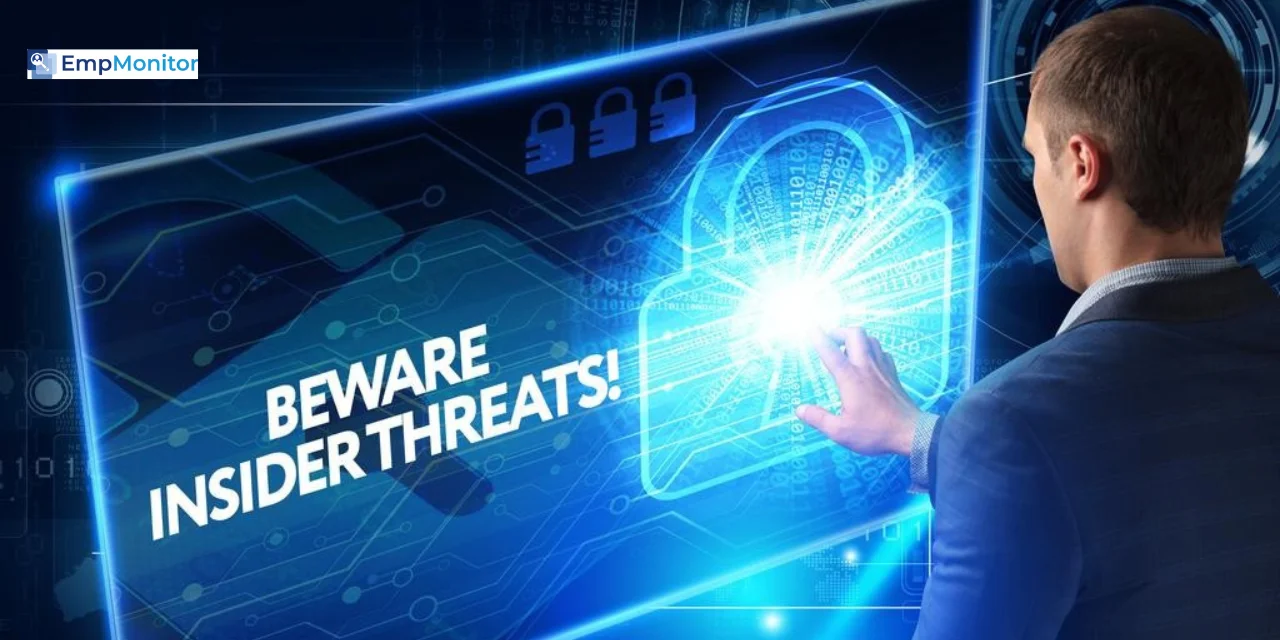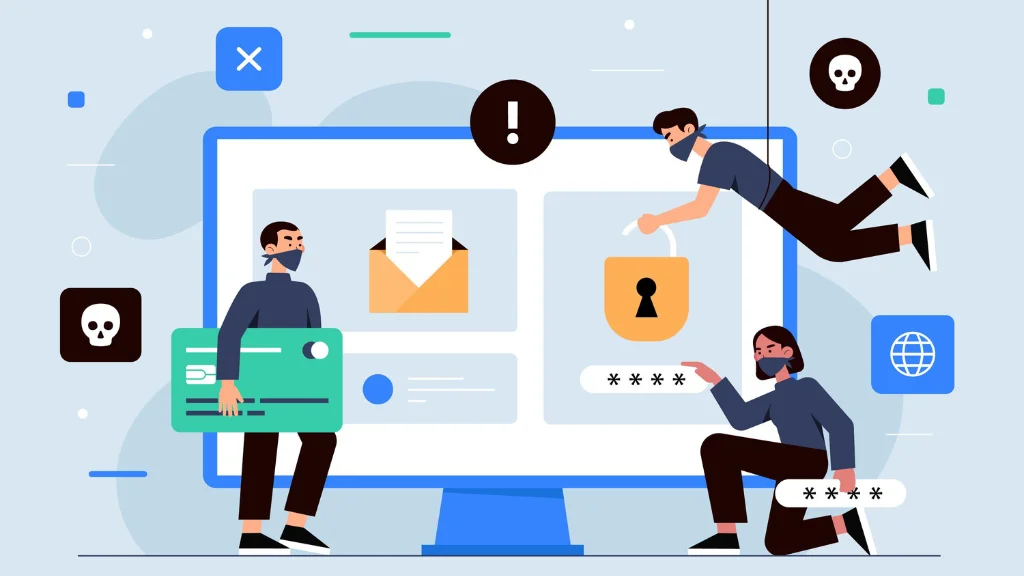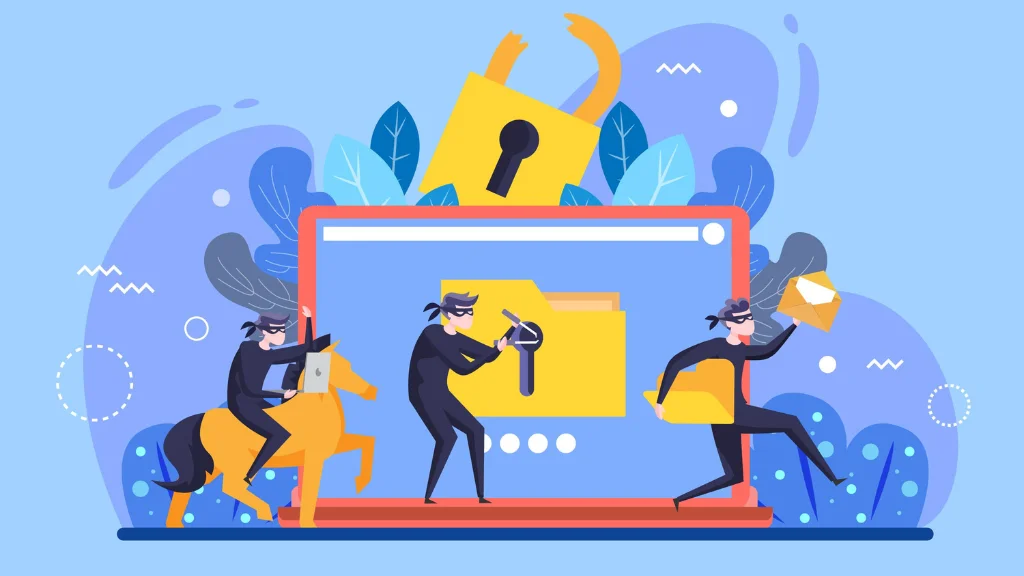Organizations face a wide variety of challenges to safeguard their sensitive data. While external threats such as hackers and malware are well-known, there is another category that often goes overlooked: the insider threat.
These threats can manifest in various forms, including employees, contractors, or business partners. The motivations behind insider threats can be diverse.
This blog aims to shed light on internal security risk, explore malicious insider threat indicators, provide insider threat examples, discuss methods to protect against insider attacks, and introduce how employee tracking and monitoring software can play a crucial role in bolstering cybersecurity defenses.
Listen To The Podcast Now!
What Are Insider Threats?
Insider threats refer to the risks posed by individuals within an organization who exploit their privileged access to compromise the security of the organization’s data, systems, or networks.
These insiders can be employees, contractors, or business associates with insider information concerning the organization’s security practices, data, and computer systems.
Internal security risk can be broadly categorized into two types: unintentional and malicious. Unintentional threats typically result from human error, such as an employee inadvertently clicking on a phishing email or unintentionally leaking sensitive information.
On the other hand, malicious threats from within involve individuals who deliberately misuse their access for personal gain, espionage, or to harm the organization. Insider threat examples include leaking information for gain and sabotaging systems out of revenge.
Malicious Insider Threat Indicators
Detecting malicious insider threats is crucial for preventing data loss and potential damage to an organization. Several indicators can help identify a malicious insider:
- Unusual Access Patterns: Keep an eye on employees accessing sensitive information outside their regular working hours or attempting to access data unrelated to their job responsibilities.
- Frequent Authentication Failures: A sudden increase in authentication failures may indicate unauthorized attempts to access sensitive information.
- Excessive Data Downloads or Transfers: Malicious insiders may download or transfer large amounts of data, especially if it is outside their normal behavior or job role.
- Unauthorized System Changes: Monitor for unauthorized changes to system configurations or permissions, as these can be signs of malicious activity. And related to this indicator there are many insider threat examples in the real world.
- Social Engineering Indicators: Malicious insiders often use social engineering techniques to manipulate others into divulging sensitive information. Look for signs of unusual social behavior or manipulation within the organization.
Examples of Insider Threats
To better understand the gravity of internal security risk, let’s delve into some real-world examples:
Data Theft for Personal Gain: An employee working in the finance department of a company exploited their access to sensitive financial data for personal financial gain. This insider shared confidential information with external parties in exchange for monetary compensation.
Sabotage by Disgruntled Employees: Another one of the insider threat examples is a disgruntled employee with knowledge of critical systems intentionally sabotaging the organization’s IT infrastructure. This act of revenge caused significant downtime and financial loss for the company.
Espionage and Intellectual Property Theft: In some cases, employees with access to proprietary information may engage in espionage, stealing intellectual property to benefit a competitor or sell to the highest bidder.
Real World Example Of Insider Threats
Real-world examples of threats from within highlight the diverse nature of these risks and the potential impact on organizations:
- Edward Snowden (2013): Perhaps one of the most well-known insider threat examples, Edward Snowden, a former National Security Agency (NSA) contractor, leaked classified information to the media. Snowden’s actions shed light on global surveillance programs, causing significant damage to national security. This incident underscored the importance of monitoring and controlling privileged access to sensitive information within government agencies.
- Chelsea Manning (2010): Manning, a U.S. Army intelligence analyst, leaked classified documents to WikiLeaks. The materials included diplomatic cables and military reports, leading to diplomatic tensions and compromising the safety of individuals mentioned in the documents. Manning’s case emphasizes the need for strict access controls and continuous monitoring of individuals with access to sensitive military information.
- UBS Rogue Trader (2011): Next one in the insider threat examples is Kweku Adoboli, a trader at UBS, engaged in unauthorized trading activities that resulted in a loss of over $2 billion for the bank. Adoboli exploited gaps in risk management and internal controls to conduct fraudulent trades. This incident highlights the importance of financial institutions implementing effective monitoring and risk mitigation strategies to prevent insider threat and trading and fraudulent activities.
- Tesla Data Theft (2018): A Tesla employee, identified as Martin Tripp, was accused of stealing confidential company information and sabotaging Tesla’s manufacturing operations. Tripp’s actions, motivated by a perceived grievance against the company, showcased the potential for insiders to compromise intellectual property and disrupt business operations.
- Healthcare Threats From Within (Various): In the healthcare sector, there have been instances of insider threat examples of compromising patient data. This can include healthcare employees accessing patient records without authorization or selling sensitive information on the black market. Such incidents emphasize the need for healthcare organizations to implement stringent access controls and monitor employee activities to protect patient privacy.
Also Read
USER ACTIVITY MONITORING| A COMPLETE GUIDE TO STAY PROFITABLE
How to Protect Against Insider Attacks
Mitigating insider threats requires a multi-faceted approach that combines technology, policies, and employee education. Here are some strategies for insider threat detection and to protect against insider attacks:
- Employee Training and Awareness: Educate employees about cybersecurity best practices, the risks of internal security risk, and the importance of safeguarding sensitive information.
- Strict Access Controls: Implement a principle of least privilege, ensuring employees have access only to the information necessary for their job role. Regularly review and update access permissions. It is necessary as many insider threat examples show there is need for this.
- Monitoring and Auditing: Employ continuous monitoring and auditing tools for user activity monitoring, detect unusual patterns, and identify potential risk posed by insider.
- Data Loss Prevention (DLP) Solutions: Implement DLP solutions to monitor, detect, and prevent the unauthorized transfer of sensitive data outside the organization.
- Incident Response Plan: Develop a comprehensive incident response plan that includes specific steps for addressing internal security risks. This plan should involve collaboration between IT, security, and human resources teams.
EmpMonitor can help to implement these strategies fortifying defenses against insider threats effectively.
How EmpMonitor Protects Against Insider Threats
If you are looking for robust protection after coming across so many insider threat examples, organizations can benefit from advanced employee monitoring software.
EmpMonitor, a leading employee monitoring software, offers a suite of features designed to enhance cybersecurity defenses.
- User Activity Monitoring: EmpMonitor tracks and records user activities in real time, providing insights into employee behavior on company devices. This includes websites visited, applications used, and time spent on each task.
- Keystroke Logging: The software captures keystrokes, helping organizations identify any unusual or suspicious typing patterns that may indicate malicious activities.
- Screen Capture and Recording: EmpMonitor allows employers to capture screenshots and record employee screens, providing a visual record of activities. This feature is particularly useful for investigating potential threats from within.
- Behavior Analytics: The software employs behavior analytics to identify deviations from normal user behavior, flagging activities that may indicate risk posed by insider. This proactive approach enhances the ability to detect potential risks before they escalate. This was much needed in many insider threat examples mentioned above.
- Endpoint Security: EmpMonitor enhances endpoint security by monitoring devices connected to the organization’s network. Any unauthorized devices attempting to access sensitive information are recorded, allowing swift response.
- Insider Threat Reporting: EmpMonitor provides detailed reports on user activities, allowing organizations to conduct thorough investigations in the event of a suspected insider threat. These reports can be crucial for evidence and analysis.
Conclusion
As organizations continue to navigate the complex landscape of cybersecurity threats, the importance of addressing internal security risks cannot be overstated. By understanding the nature of threats, and insider threat examples, recognizing malicious indicators, and implementing proactive measures, cybersecurity can be significantly enhanced.
Employee tracking and monitoring software, such as EmpMonitor, plays a pivotal role in this defense strategy for insider threat management. With its advanced features for monitoring user activities, behavior analytics, and insider threat reporting, EmpMonitor empowers organizations to detect, prevent, and respond to threats from within effectively.
In the dynamic world of cybersecurity, staying one step ahead of potential risks is paramount. By combining technological solutions with employee education and robust policies, organizations can create a resilient defense against insider threats, ultimately safeguarding their valuable data and assets.














